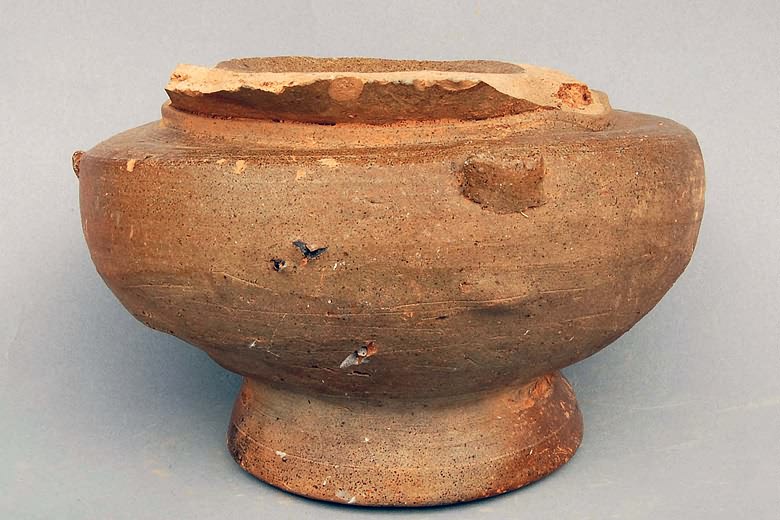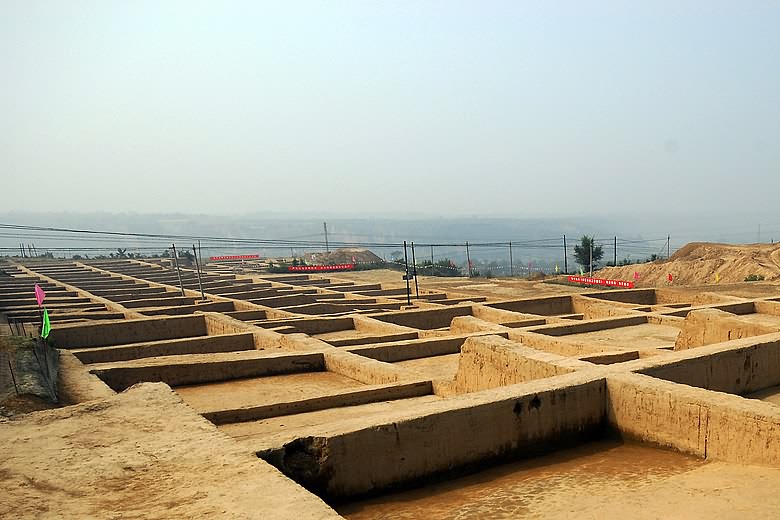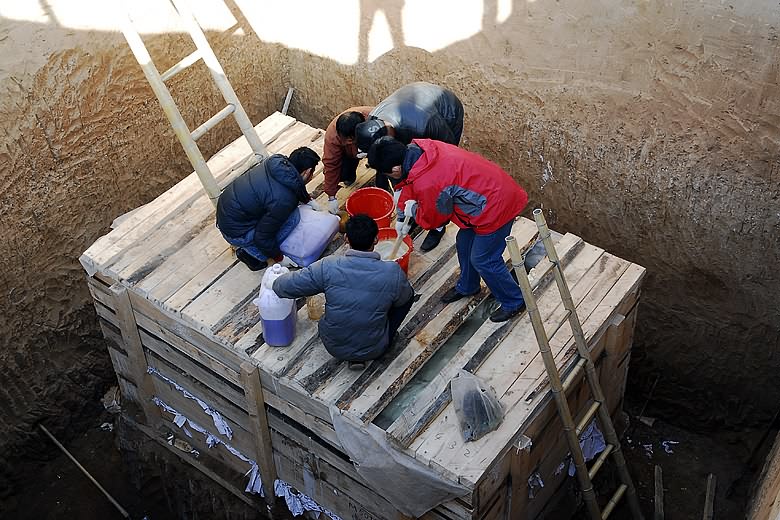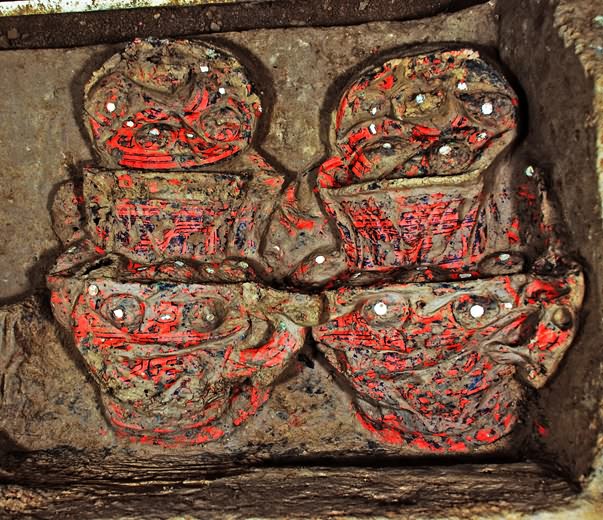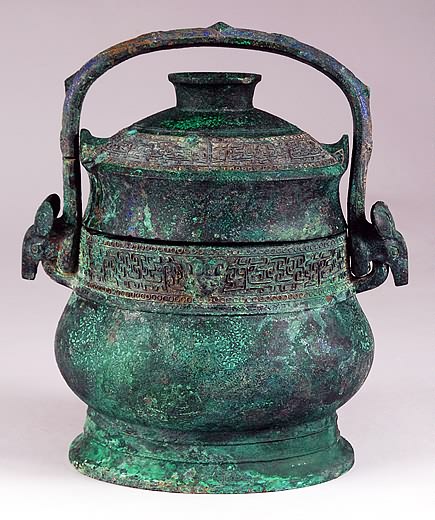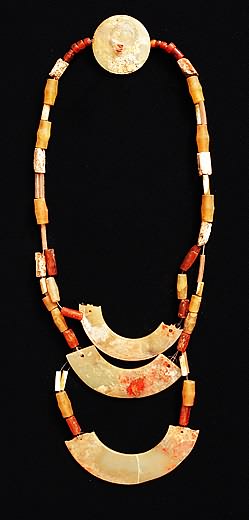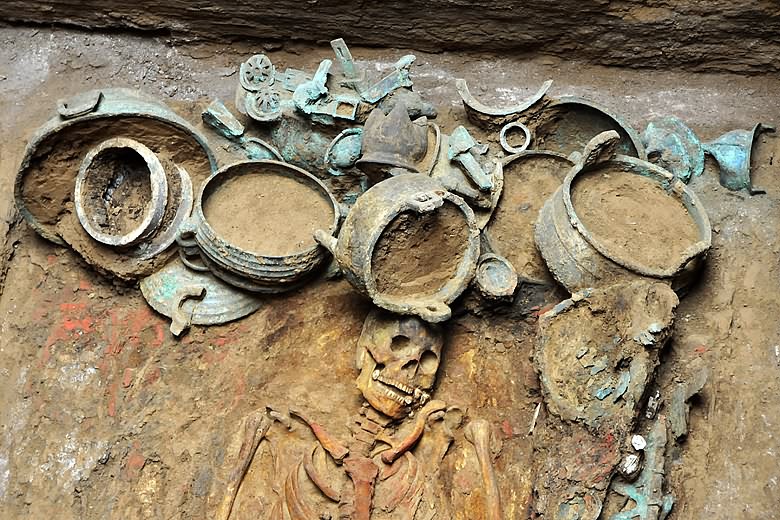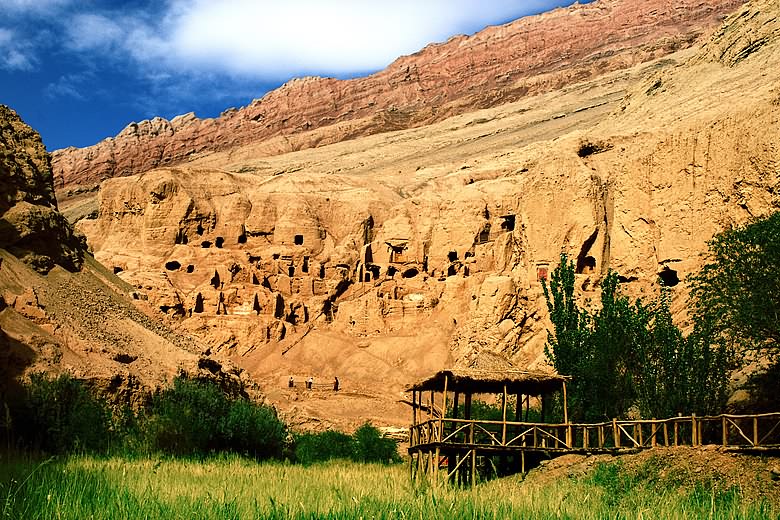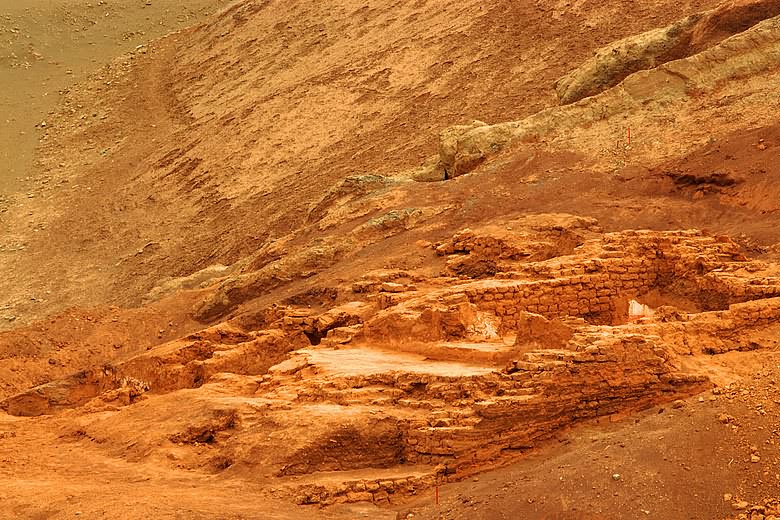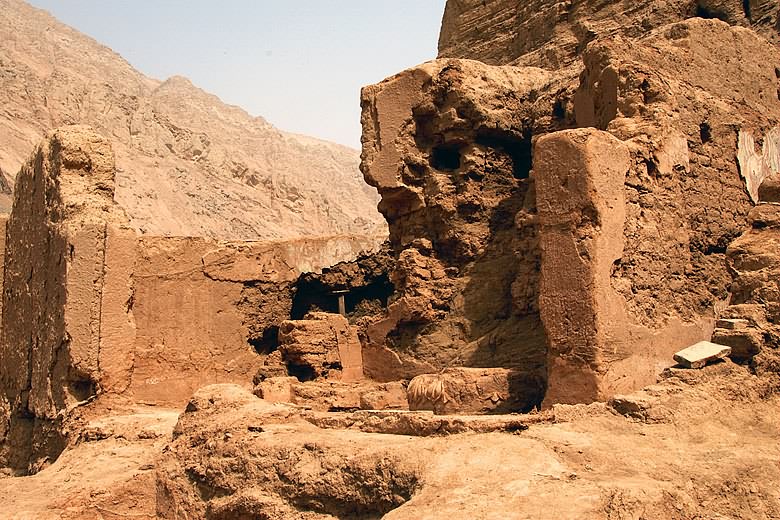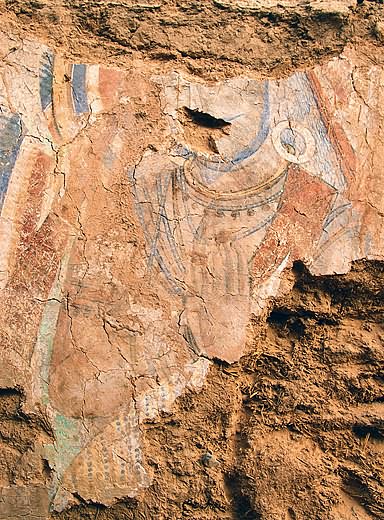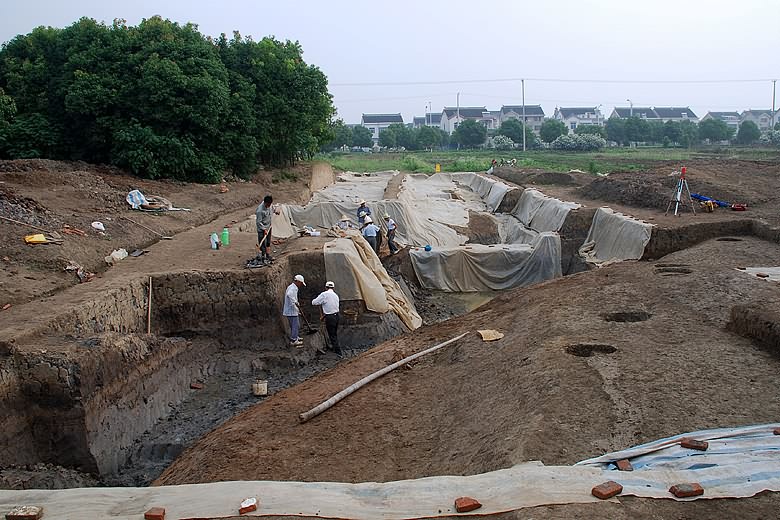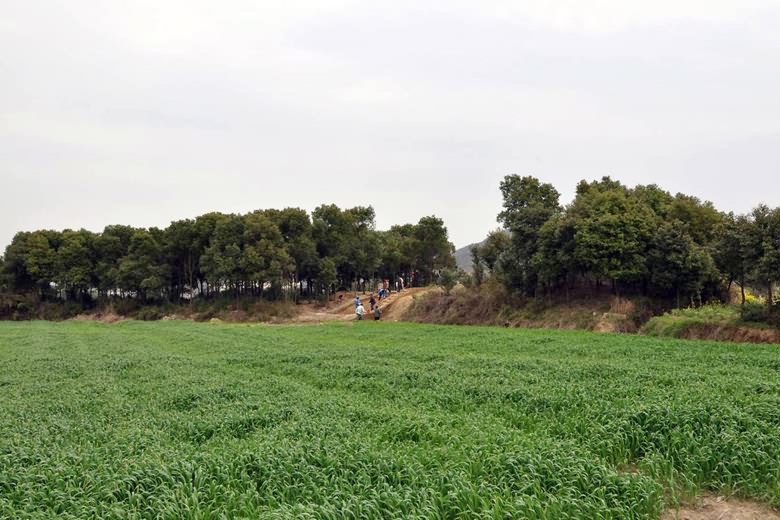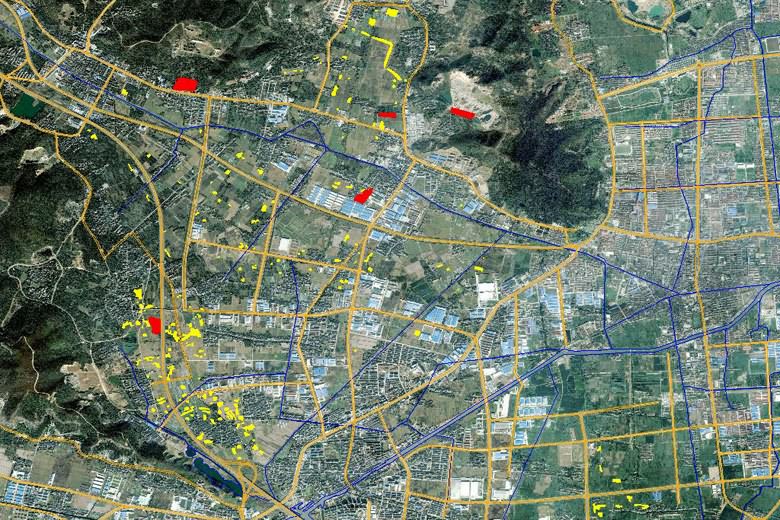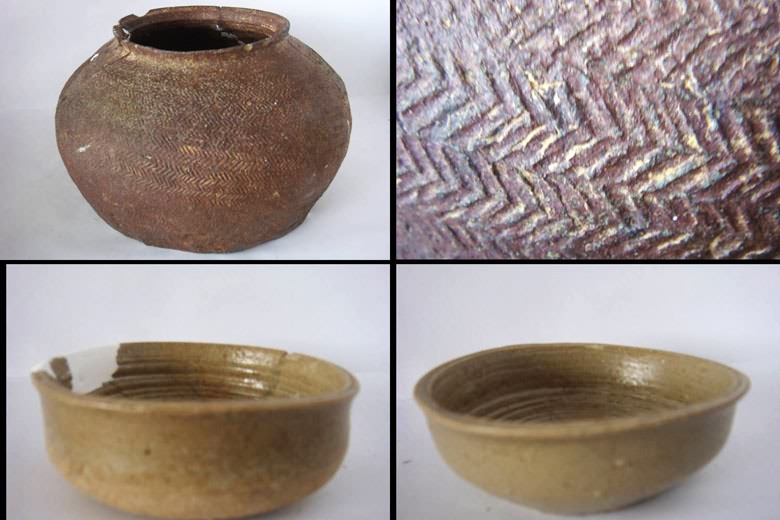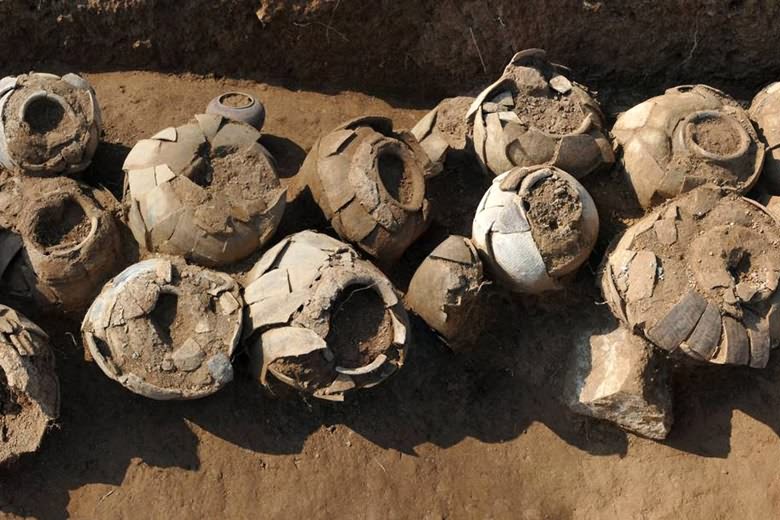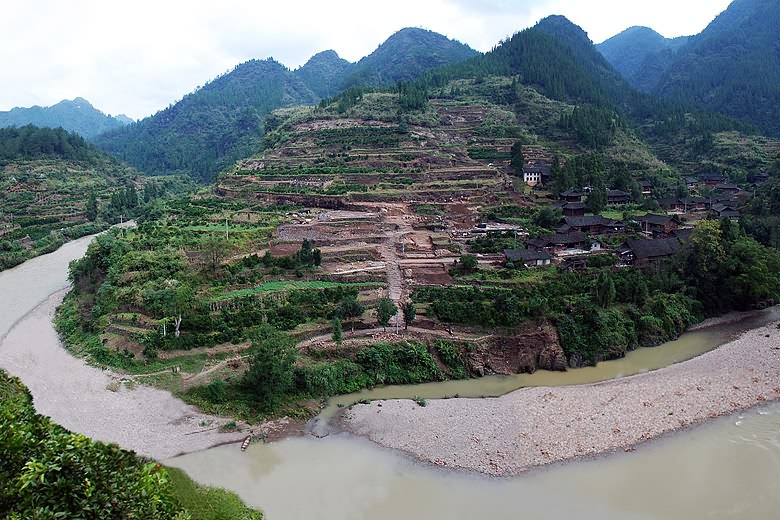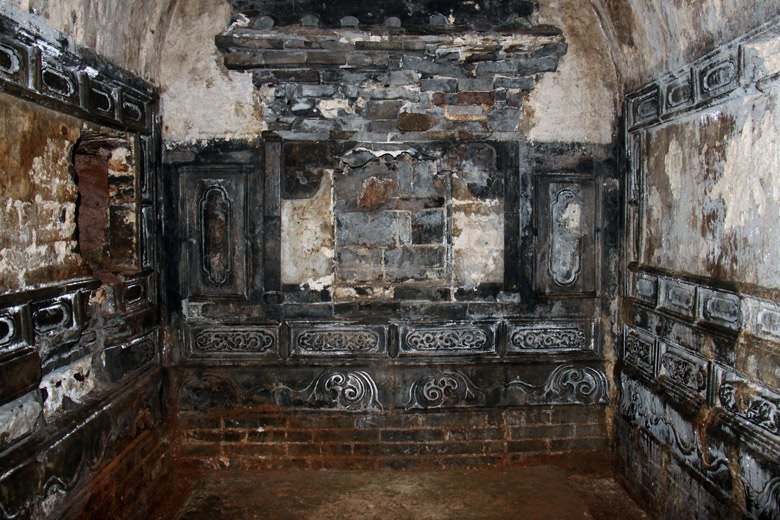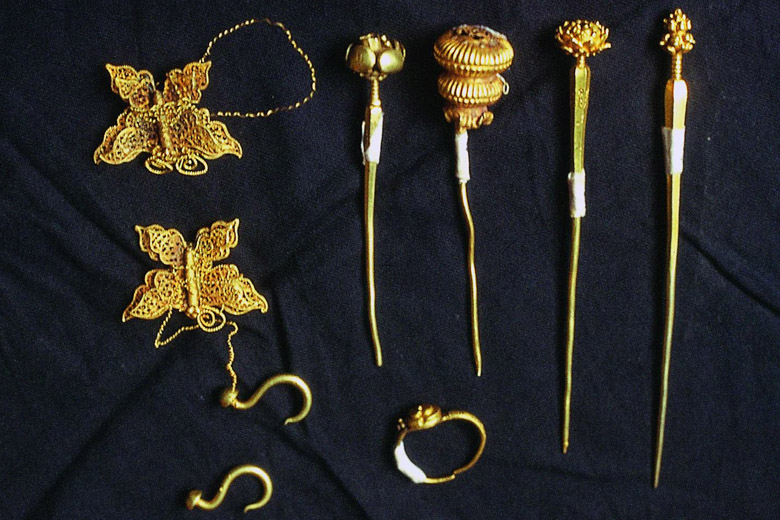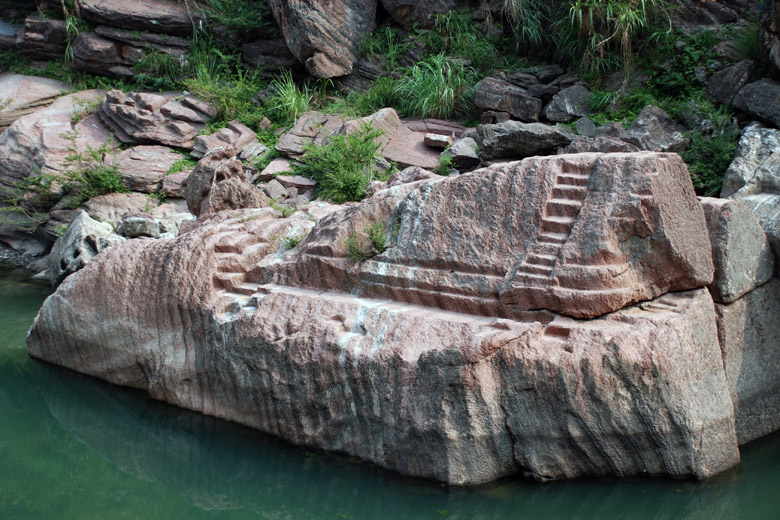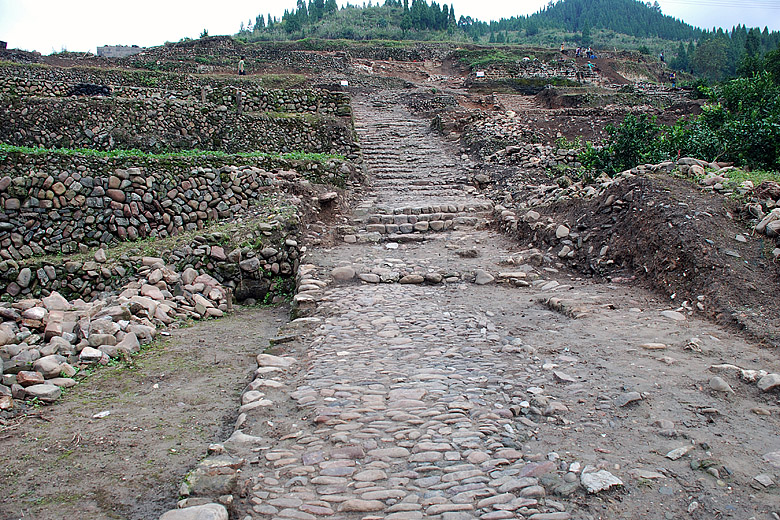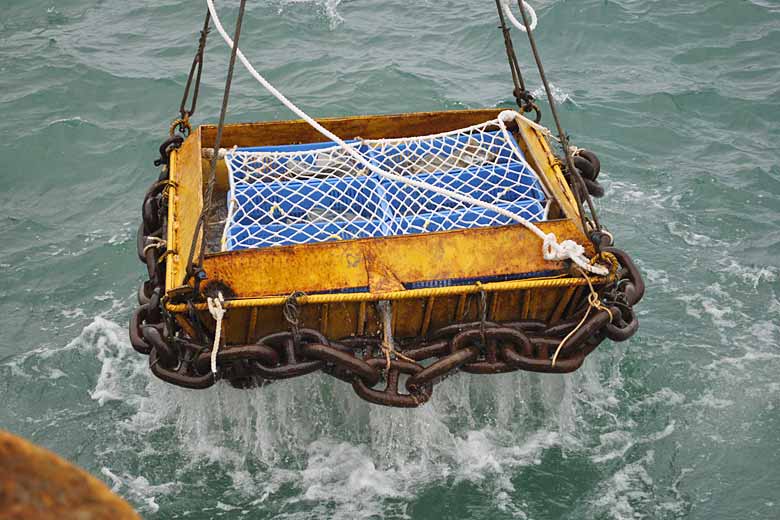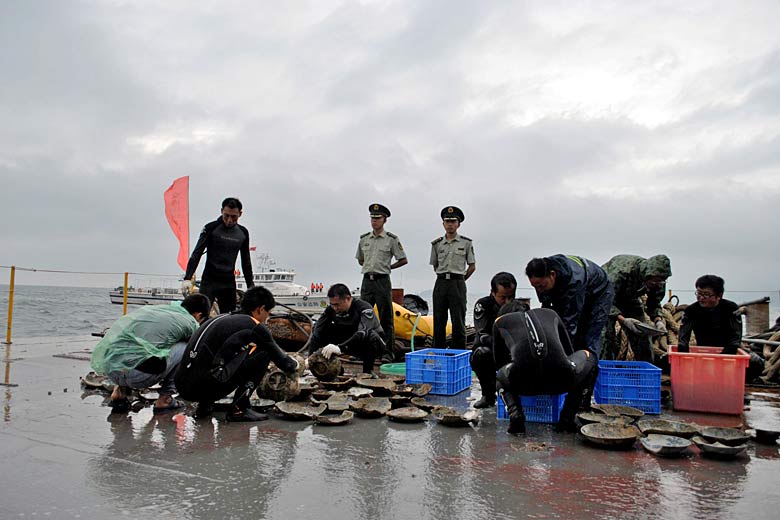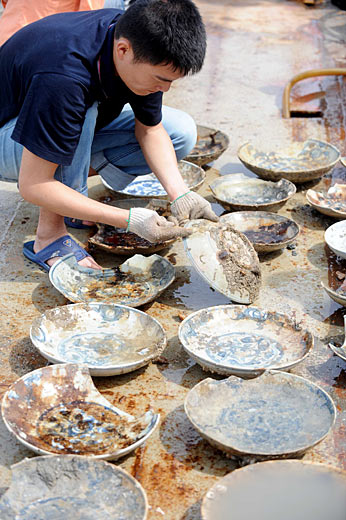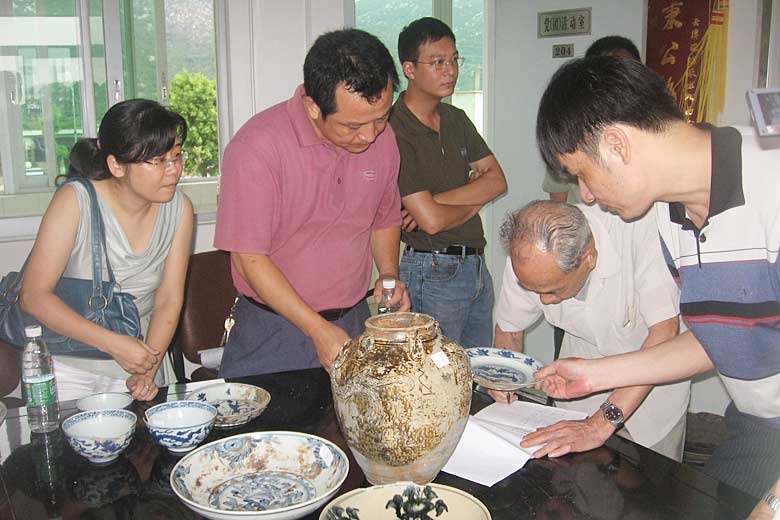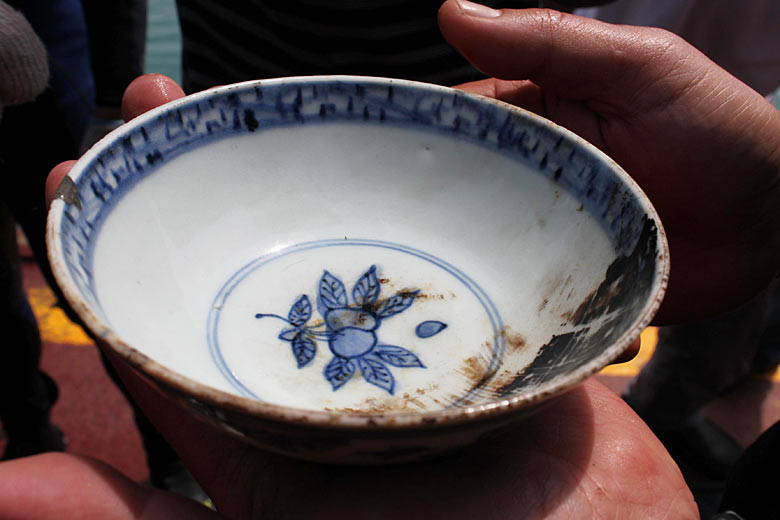/
- NANSHAN KILN: A picture of the Nanshan kiln complex, one of the oldest porcelain kiln sites ever discovered. Dating back to the early Shang Dynasty (1600-1046 B.C.), the kiln site is located in Nanshan Village, the city of Huzhou in east China's Zhejiang Province. The kiln site is situated near the west side of the Dongshaoxi River, the middle reaches of which are known as the birthplace of Chinese porcelain
- ANCIENT CREATIONS: Samples of porcelain collected from Zhoujiashan, a kiln located in the Nanshan kiln complex
- FRAGILE VESSEL: A dou, or ancient vessel created at the Nanshan kiln complex
- STURDY SUPPORT: A porcelain pillar created at the Nanshan kiln complex
- PORCELAIN VESSEL: A zun, or wine vessel created at the Nanshan kiln complex
- STORAGE: A storage pit for raw materials at the Nanshan kiln complex
- EXCAVATION ZONE: A photo of the Dahekou tomb in Yicheng County in north China's Shanxi Province. The tomb is of great importance for archaeological studies on royal tombs built during the Western Zhou Dynasty (1046-771 B.C.)
- REMOVAL: A coffin is removed from the Dahekou tomb in north China's Shanxi Province
- ANCIENT PORCELAIN: A lei, or painted wine vessel recovered from the Dahekou tomb in north China's Shanxi Province
- CHEERS: A bronze you, or drinking vessel recovered from the Dahekou tomb in north China's Shanxi Province
- ANCIENT JEWELRY: A jade pendant recovered from the Dahekou tomb in north China's Shanxi Province
- PIECES OF HISTORY: Bronze items recovered from the Dahekou tomb in north China's Shanxi Province
- ANCIENT GROTTO: The panaroma view of the Tuyugou Grotto in northwest China's Xinjiang Uygur Autonomous Region. The site was the earliest Buddhist grottoes in eastern Xinjiang that can be dated back around 5th century. Located in Shanshan County, it has great geographic significance for the spreading of Buddhist grotto artwork from the west regions to central China
- NEW DISCOVERY: A recently discovered on-ground Uygur Buddhist temple in Shanshan County in northwest China's Xinjiang Uygur Autonomous Region
- REDISCOVERED ART: A recently discovered grotto in eastern part of the Tuyugou Grotto in northwest China's Xinjiang Uygur Autonomous Region
- WALL ART: A cave painting found in a recently discovered grotto in eastern part of the Tuyugou Grotto in northwest China's Xinjiang Uygur Autonomous Region
- GATHERING AREA: An excavation site in Xinfeng Village in the city of Suzhou in east China's Jiangsu Province. It was an important area during the Spring and Autumn Period (770-476 B.C.), and is part of the Spring-Autumn City Ruins of Suzhou's Mudu Basin
- GOING UNDERGROUND: An excavation site for the north city rampart in Wufeng Village in the city of Suzhou in east China's Jiangsu Province
- MARKING THE SPOT: A map showing the locations of ancient cities discovered in the Mudu Basin in the city of Suzhou in east China's Jiangsu Province
- EARLY POTTERY: Burial pottery jars from the Mudu Basin in the city of Suzhou in east China's Jiangsu Province
- BURIED FOR CENTURIES: Burial pottery jars recently discovered in the Mudu Basin of Suzhou City in east China's Jiangsu Province
- GREAT SIGNIFICANCE: The panaroma view of the old city town of the tusi regime in Yongshun County in central China's Hunan Province. Experts believe that the ruin, which was the political, economic, military and cultural center with a history of more than 800 years, is the largest and best preserved site of the Tujia ethnic group area in southernwest and central China. Tusi is an official title used to describe chieftsmen who ruled the region during the Yuan, Ming and Qing dynasties (1271-1911)
- A RULER'S TOMB: A tomb used by the tusi in Yongshun County in central China's Hunan Province. Tusi is an official title used to describe chieftsmen who ruled the ethnic region during the Yuan, Ming and Qing dynasties (1271-1911)
- ANCIENT JEWELS: Gold jewelry recovered from the graveyard in Yongshun County in central China's Hunan Province
- FISHING HOLE: An ancient fishing platform, which was discovered in Yongshun County in central China's Hunan Province
- ROAD TO THE PAST: The cobblestone-paved Youjie Road in Yongshun County in central China's Hunan Province
- SUCCESSFUL OPERATION: A batch of ancient porcelain ware is salvaged from Nan'ao 1 on May 16, 2010. The discovery of merchant ship Nan'ao 1 shows the sea area off Nan'ao Island in Shantou, Guangdong Province, was an important trading area for Chinese and foreign merchant vessels in the Ming Dynasty (1368-1644) (CFP)
- SAFEGUARDING THE TREASURE: Chinese military men protect salvaged relics from Nan'ao 1 day and night. The discovery of merchant ship Nan'ao 1 shows the sea area off Nan'ao Island in Shantou, Guangdong Province, was an important trading area for Chinese and foreign merchant vessels in the Ming Dynasty (1368-1644) (CFP)
- BIG DISCOVERY: Archaeologists clean up porcelain ware excavated from Nan'ao 1 on May 17, 2010. The discovery of merchant ship Nan'ao 1 shows the sea area off Nan'ao Island in Shantou, Guangdong Province, was an important trading area for Chinese and foreign merchant vessels in the Ming Dynasty (1368-1644) (LONG CHENGTONG)
- CAREFUL OBSERVATION: Experts examine relics found in Nan'ao 1. The discovery of merchant ship Nan'ao 1 shows the sea area off Nan'ao Island in Shantou, Guangdong Province, was an important trading area for Chinese and foreign merchant vessels in the Ming Dynasty (1368-1644) (CFP)
- PRECIOUS FIND: A porcelain bowl salvaged from Nan'ao 1. The discovery of merchant ship Nan'ao 1 shows the sea area off Nan'ao Island in Shantou, Guangdong Province, was an important trading area for Chinese and foreign merchant vessels in the Ming Dynasty (1368-1644) (CFP)
- EXQUISITE WORKS: A set of porcelain ute sils from China's Ming Dynasty (1368-1644) is shown in the Dutch National Museum in Amsterdam (CFP)
|
